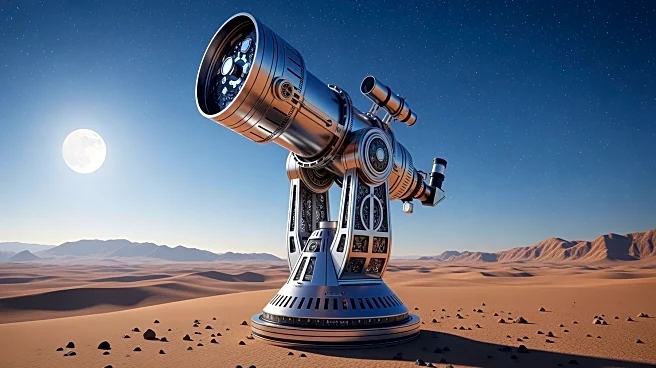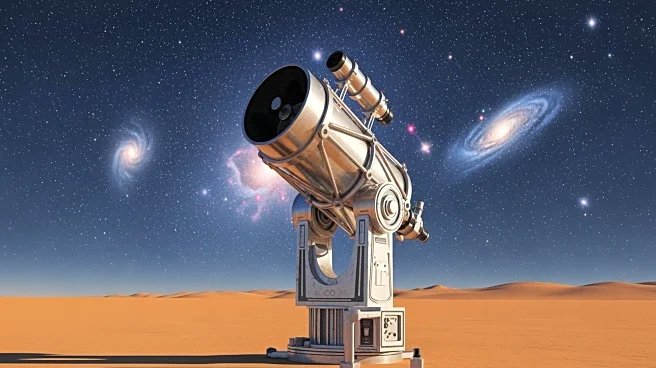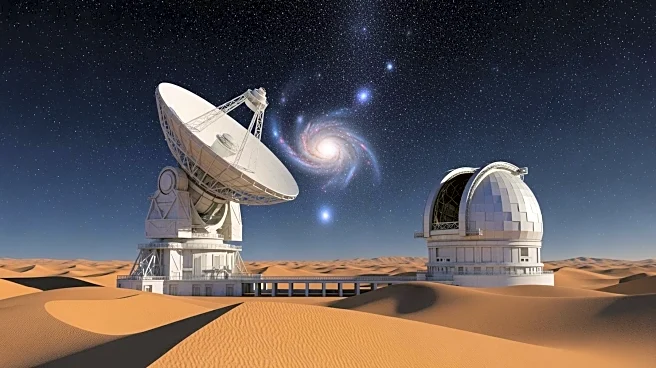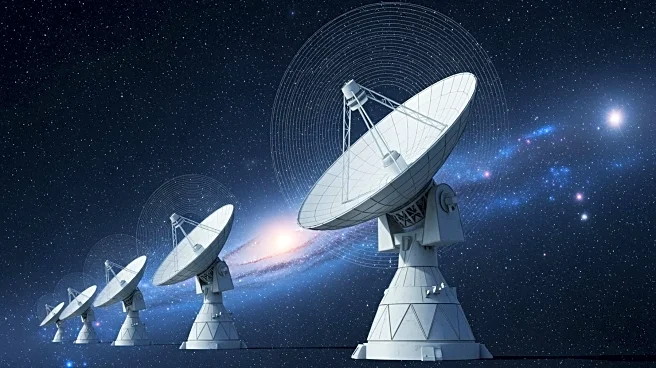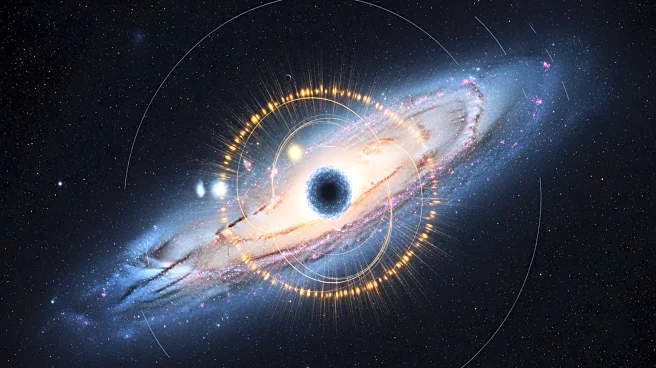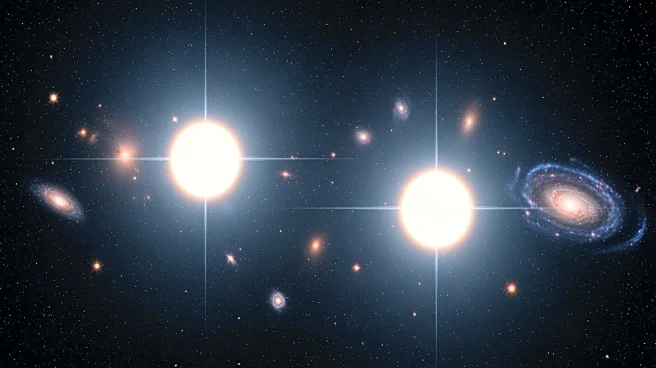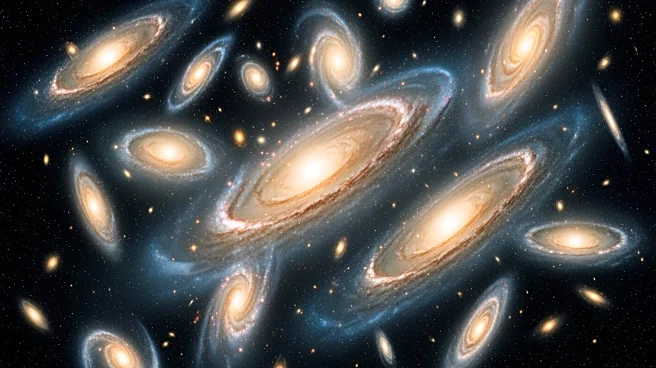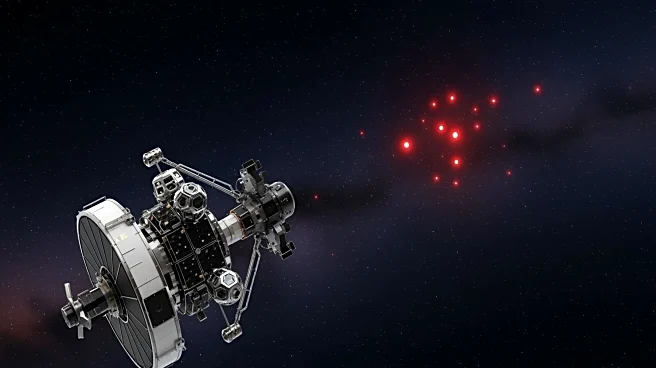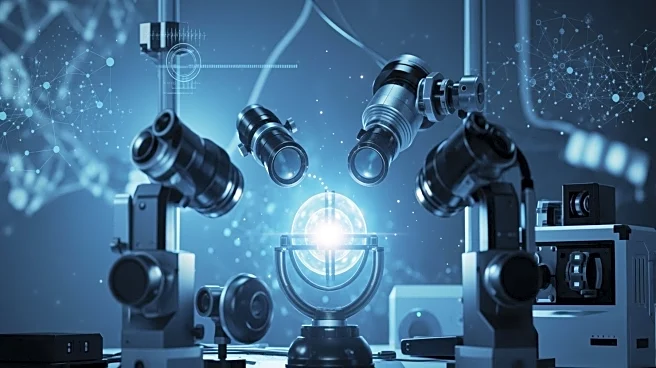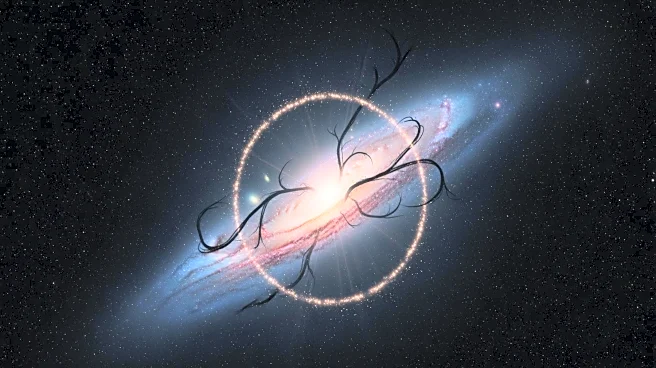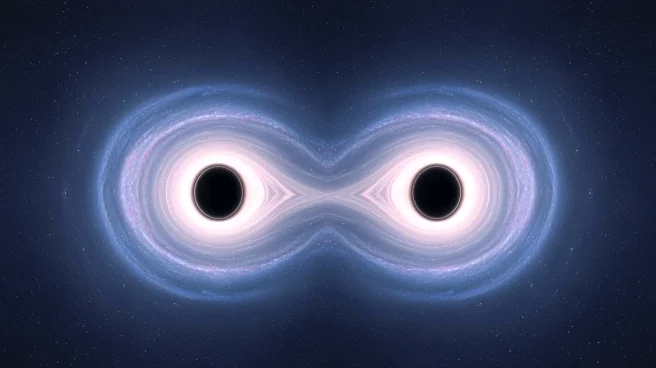What's Happening?
Researchers using the Murchison Widefield Array telescope in Western Australia have uncovered evidence suggesting that the universe experienced heating prior to the epoch of reionization, contrary to the 'cold
start' theory. The study, published in The Astrophysical Journal, indicates that heating likely began around 800 million years after the Big Bang, driven by x-rays from early black holes and stellar remnants. This discovery challenges previous assumptions about the conditions during the cosmic dark age and provides new insights into the universe's development.
Why It's Important?
Understanding the universe's early heating phase is crucial for astrophysics, as it sheds light on the transition from the cosmic dark age to the epoch of reionization. This period marked the formation of the first stars and galaxies, influencing the structure and evolution of the universe. The findings could lead to a reevaluation of existing models and theories about the universe's early development, impacting future research in cosmology and the study of cosmic evolution.
What's Next?
The research team plans to continue analyzing data from the Murchison Widefield Array to further investigate the heating phase and identify the specific signals associated with early black holes and stellar remnants. This ongoing research may refine the understanding of the universe's early conditions and contribute to the development of more accurate cosmological models.
Beyond the Headlines
The study highlights the importance of advanced telescopes and data analysis techniques in uncovering the universe's hidden history. It underscores the need for international collaboration in astrophysics to tackle complex questions about the universe's origins and evolution.
